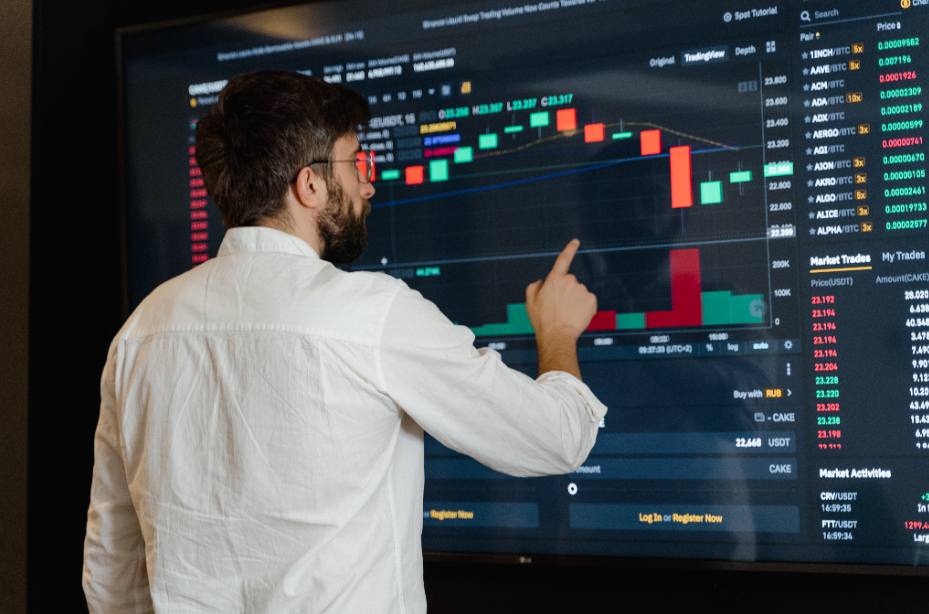The best traders are always evolving. Many courses focus on basic technical indicators, generic risk management, and surface-level psychology, but professional traders are learning deep institutional techniques, AI-driven strategies, and unconventional market insights that most educators ignore. This article reveals what top traders are learning right now—insights that can make the difference between being an average trader and truly mastering the markets.
Market Microstructure: The Hidden Language of Price Action
Most traders focus on price charts, but few understand why prices move the way they do. Professional traders are studying market microstructure—the foundation of how orders flow through the market and impact pricing.
Understanding market microstructure gives traders an edge, as it reveals how liquidity providers, institutional players, and algorithms influence price movements. This knowledge is often overlooked in retail trading but is a key focus in online investment courses designed to teach advanced market dynamics.
What Market Microstructure Teaches You”
- How liquidity providers (market makers) influence price movements
- Why stop-hunting happens—and how to avoid getting trapped
- Order book dynamics—how large orders are executed without disrupting the market.
- The difference between toxic and non-toxic flow (knowing when liquidity providers adjust their strategies).
Hedge funds and HFT firms use market microstructure analysis to exploit inefficiencies in price movements, while most retail traders remain unaware of its impact. What top traders are doing:
- Studying Level 2 order flow, iceberg orders, and liquidity sweeps.
- Using footprint charts and volume profile analysis to track institutional activity.
- Learning how dark pools affect price movement (something most retail traders don’t even know exists).
AI & Machine Learning in Trading: The Next Evolution
Most trading courses still focus on manual strategies, but the best traders are integrating AI-powered models and machine learning algorithms to enhance their decision-making.
- Pattern recognition: AI spots complex patterns humans can’t.
- Sentiment analysis: Algorithms scan news, social media, and economic data to predict market shifts.
- Predictive analytics: AI models adjust strategies based on evolving market conditions.
- Automated risk management: AI-driven stop-loss and position-sizing optimization.
Using Python, TensorFlow, and QuantConnect to build AI-driven trading models. Leveraging machine learning techniques to improve algo trading efficiency. Backtesting AI strategies on high-frequency and statistical arbitrage models.
Liquidity Wars: How Smart Money Manipulates Retail Traders
Most traders believe markets move because of technical indicators or economic news, but professional traders study liquidity distribution and market manipulation tactics used by institutions.
How Liquidity Wars Impact Traders
- Stop-loss hunting – Market makers trigger retail stop-losses before reversing price.
- Fake breakouts – Institutions create false price movements to trap traders.
- Absorption zones – Smart money absorbs liquidity before making a big move.
- Algorithmic traps – AI-driven execution strategies lure traders into bad positions.
Banks and proprietary trading firms manipulate liquidity to create favorable trade entries for themselves while retail traders panic. Analyzing liquidity maps and heatmaps to see where institutional orders are placed. Identifying manipulation zones where smart money accumulates positions. Tracking market maker positioning instead of relying on generic technical patterns.
Macro Trading: The Deep Influence of Global Money Flow
Most traders ignore macroeconomic trends, focusing only on short-term price action. However, the best traders are learning how interest rates, liquidity cycles, and central bank policy drive markets at a deeper level.
Key Macro Trading Insights
- How liquidity cycles affect asset prices
- Why interest rates matter more than technical indicators
- Currency flows impact global markets
- Geopolitical risks create trading opportunities
Hedge funds like Bridgewater Associates build multi-billion-dollar positions based on global macro trends, while retail traders get trapped in short-term price moves. Studying Federal Reserve liquidity cycles to predict risk-on and risk-off environments. Learning bond market relationships to anticipate stock market trends.
High-Frequency Trading (HFT) Concepts for Retail Traders
Most traders assume high-frequency trading (HFT) is only for institutions, but some principles of HFT can be applied to retail trading to gain an edge.
HFT Insights That Retail Traders Can Use
- Latency arbitrage – Understanding why price moves slightly faster on some platforms.
- Quote stuffing – How HFT firms create rapid fake orders to confuse traders.
- Market-making strategies – Profiting from small price movements using limit orders.
- Speed-based execution – Using co-location services and low-latency trading tools.
Firms like Virtu Financial and Citadel Securities execute millions of trades per day, but retail traders can still exploit small inefficiencies using similar principles. Using faster execution tools and direct market access (DMA) platforms. Studying latency differences between trading platforms.
Final Thoughts: What Separates the Best Traders from the Rest?
While most traders stick to basic technical analysis and outdated strategies, the best traders focus on deep institutional knowledge, AI-driven strategies, and market psychology at an advanced level. The markets are constantly evolving, and traders who adapt to these changes and learn beyond traditional courses will maintain an edge over those who don’t. If you’re serious about trading success, focus on what the best are doing now—not what outdated courses are teaching.




